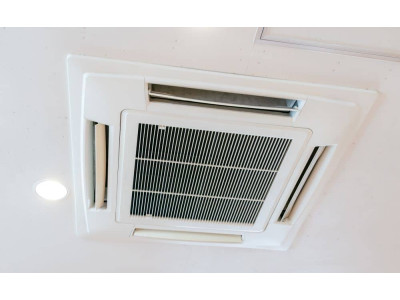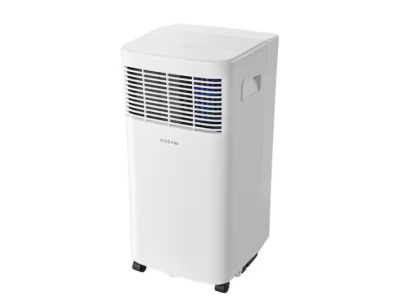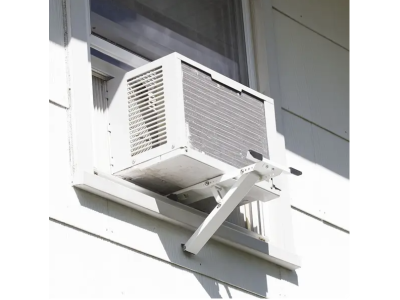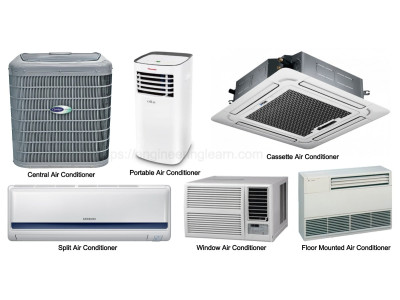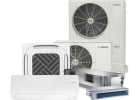
Climate Systems and Equipment Explained
Introduction to Climate Systems
Engineering-technical systems, particularly climate systems and equipment, play a crucial role in creating a healthy and comfortable indoor environment for residents of homes and apartments. At safsale.com, we offer a wide range of climate control solutions designed to meet the evolving needs of modern living, ensuring optimal air quality and temperature regulation in your living spaces.
Purpose and Functions of Climate Systems
The primary objectives of installing household climate systems in homes or cottages are to enhance air quality, modify the internal ecosystem, and establish a comfortable temperature regime. Climate control systems are essential for cooling air masses and distributing them throughout the living areas, ensuring a pleasant and healthy living environment.
Most climate control units available in the market today are multi-functional, capable of performing several key tasks:
- COOL: Cooling the air
- HEAT: Heating the air
- CLEAN: Purifying the air
- DRY: Dehumidifying the air
- FAN: Ventilating the air
Additionally, some manufacturers equip their climate equipment with deodorizing or ozonating filters to enrich the air with oxygen, further enhancing indoor air quality.
To accelerate the process of changing the microclimate, modern ventilating and air conditioning systems include a Turbo mode option, allowing them to quickly reach the desired parameters.
Types of Household Climate Equipment
Climate control equipment is categorized based on their installation methods and functionality:
1. Portable Units
Compact and easy to move, these devices are perfect for small to medium-sized rooms. They offer flexibility and convenience for users who need temporary or adjustable climate control solutions.
2. Split and Multi-Split Systems
These systems consist of an outdoor unit connected to one or more indoor units. Split systems are ideal for individual rooms, while multi-split systems can handle multiple areas simultaneously, providing efficient and scalable climate control for larger homes or apartments.
3. Wall-Mounted Units
Mounted directly on the walls, these air conditioners are discreet and save floor space. They are suitable for rooms with limited space and can blend seamlessly with interior décor.
4. Window Units
Installed within the window frame, these units are easy to set up and are commonly used in apartments and smaller homes. They are cost-effective and provide reliable cooling and heating solutions.
5. Floor Units
These units are placed on the floor and can be easily moved from room to room. They are ideal for spaces that require frequent adjustments to the climate settings.
Popular Manufacturers
Leading Western manufacturers of household air conditioners, climate equipment, and ventilation systems include Samsung, LG, Carrier (USA), Fujitsu, Daikin (Japan), Mitsubishi Electric (Japan), and Trane (USA). Each brand offers a diverse range of models with varying technical specifications, designs, and price points to cater to different consumer needs and preferences.
Selecting the Right Climate System
Choosing the appropriate climate control system involves considering multiple factors to ensure optimal performance and efficiency:
- Design and Structure: Decide between monoblock models, which consist of a single unit, and split systems that include both indoor and outdoor components.
- Installation Method: Options include window-mounted, wall-mounted, portable, and split systems, each with its own set of advantages based on the specific requirements of your space.
- Operating Principles: Select from evaporative (cooling through water evaporation), inverter (high performance and energy efficiency), or compressor-based systems.
- Functionality and Features: Look for additional features such as self-cleaning, self-diagnostics, auto mode, automatic settings, remote control, and WiFi connectivity to enhance user convenience and system efficiency.
Modern climate systems are designed with sleek, compact designs that fit seamlessly into contemporary interiors, including minimalist, high-tech, and modern styles. However, choosing the right home climate equipment can be challenging as consumers must balance multiple criteria, including functionality, cost, energy efficiency, and aesthetic compatibility.
Managing Modern Climate Systems
Today's consumers demand easy-to-use climate systems that integrate seamlessly with automated or electronic controls. Many models now feature electronic control units that can be accessed via the internet, providing remote management capabilities. These advanced systems often include:
- Thermometers: To monitor and adjust the air temperature.
- Thermal Relays: To automatically turn the device on or off based on temperature deviations.
- Photo Sensors and Motion Detectors: To activate energy-saving modes when no one is present in the room.
- Self-Diagnostic Modules: To automatically detect and alert users to any technical issues.
- Self-Cleaning Units: To automate the filter cleaning process, reducing the need for manual maintenance.
Achieving Comfortable Temperatures and Clean Air
Ensuring the purity of the air processed by climate systems is increasingly important. Manufacturers address air purification, disinfection, and quality improvement by incorporating multiple filters with different functionalities:
- Mechanical Filters: For coarse cleaning by trapping large dust particles.
- Fine Filters: Including Biological BIO-filters that neutralize allergens like pollen, pet dander, bacteria, and mold spores.
- Chemical Filters: For deodorizing, ozonating, or enriching the air with oxygen.
- Plasma Filters: Highly effective in neutralizing harmful substances.
Modern climate systems with LED lighting not only offer energy savings but also ensure that the stretch ceiling materials remain undamaged due to minimal heat emission. This allows for flexible and creative lighting solutions without compromising the integrity and safety of the ceiling materials.
Conclusion
Modern climate systems and equipment are sophisticated technologies offering numerous benefits, including energy efficiency, multi-functionality, and ease of management. To ensure long-lasting performance and rapid achievement of desired climate conditions, it is essential to select the right model and have it professionally installed. At safsale.com, we provide a wide array of high-quality climate control solutions tailored to meet your specific needs, ensuring a comfortable and healthy living environment for you and your family.
For more information and to explore our range of climate systems and equipment, visit safsale.com
